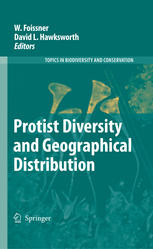

Most ebook files are in PDF format, so you can easily read them using various software such as Foxit Reader or directly on the Google Chrome browser.
Some ebook files are released by publishers in other formats such as .awz, .mobi, .epub, .fb2, etc. You may need to install specific software to read these formats on mobile/PC, such as Calibre.
Please read the tutorial at this link: https://ebookbell.com/faq
We offer FREE conversion to the popular formats you request; however, this may take some time. Therefore, right after payment, please email us, and we will try to provide the service as quickly as possible.
For some exceptional file formats or broken links (if any), please refrain from opening any disputes. Instead, email us first, and we will try to assist within a maximum of 6 hours.
EbookBell Team

0.0
0 reviewsThere is still a widespread belief that microscopic organisms, such as bacteria, fungi, protists, and small multicellulars, have a cosmopolitan distribution due to a presumed easy dispersal by wind and water. However, the contributions collected in this book – ranging from protists to rotifers and mosses – show that microorganisms have community structures and biogeographies similar to those found in animals and vascular plants, although the ranges of many can be wider and local endemism is rarer. Accordingly, the cosmopolitan distribution model of Finlay & Fenchel is to be replaced by the moderate endemicity model of Foissner, which assumes that one third of microscopic organisms are morphological and/or genetic endemics. This has far-reaching consequences for estimates of the number of species and their conservation. There is convincing evidence that we know only about 20% of the actual diversity in many protist groups, especially saprotrophs and heterotrophs such as amoebae, flagellates, and ciliates. It is probable that this great diversity of microscopic organisms is caused by low extinction rates over geological time, and short generation times which foster dispersal of genetic variants. That the great diversity of microorganisms has remained unrecognized for such a long time has several reasons, of which the most serious is a shortage of taxonomists. Considering the dramatic losses of habitats occurring, especially in the tropics, a large portion of the Earth’s protist biodiversity will disappear before it has been discovered.
Reprinted from Biodiversity and Conservation, volume 17:2 (2008)